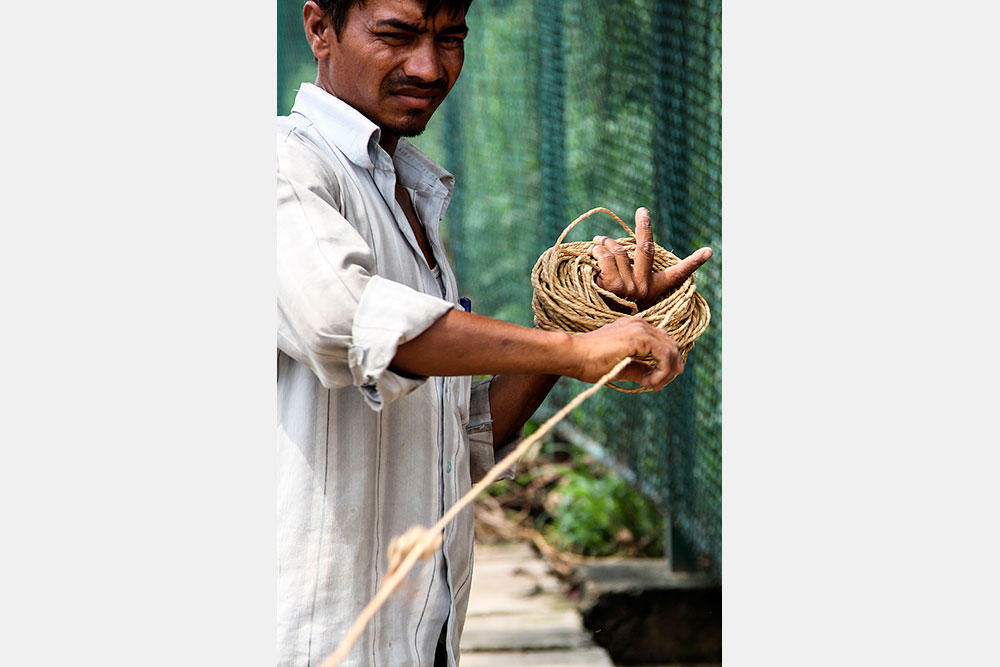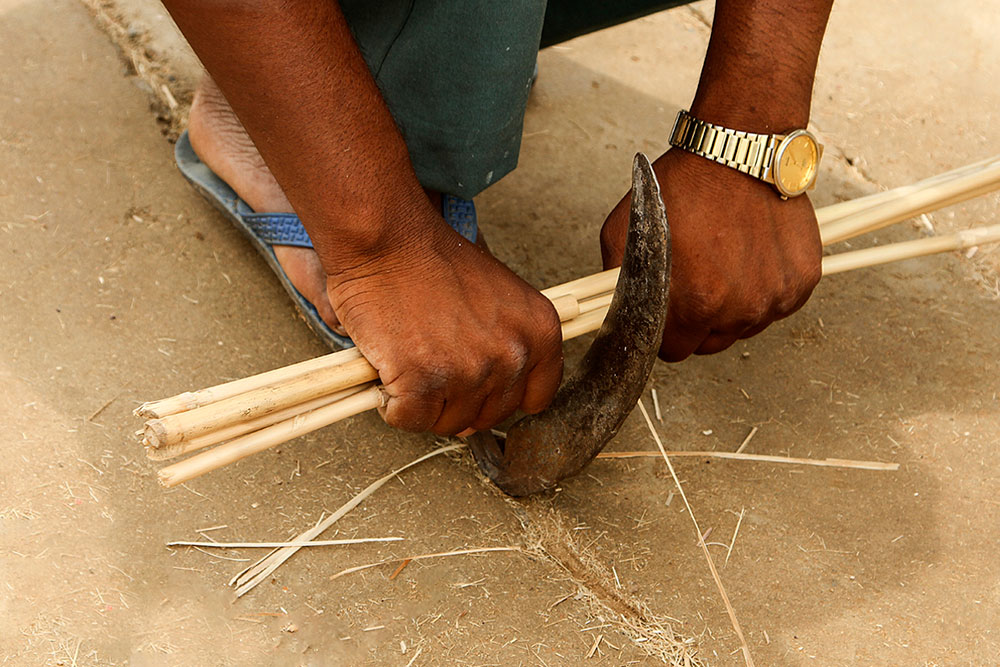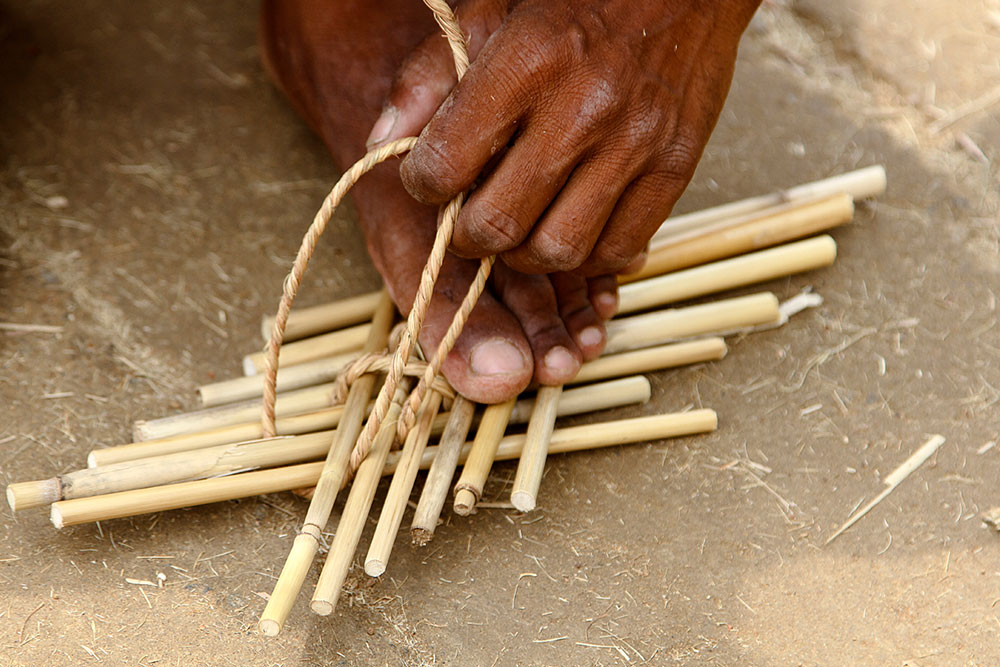Design Gallery
Bamboo Stool - Bengaluru
Making of Bamboo Furniture
by
The word Bamboo is derived from Kannada term “Bambu”. Craftsmen produce bamboo into a number of useful products for their regular necessities. All parts of the bamboo are used, for purposes including foodstuff, livestock, hay, construction materials, and medicines. Bamboo can be crafted into various products like stools, chairs, baskets, tables and many more. The making of bamboo products is perhaps the most universal of all crafts practiced by a large number of artisans scattered throughout the country.
The tradition of bamboo craft started from nearly 40 to 50 years back and carried from older generations to younger generations. The production of furniture involves different stages for each product. The Mudah is a low stool made of bamboo and split cane. Bamboo is used in the body while cane is used in binding as well as weaving the seating part. The patterns are created with their own inventive ideas and skills without using any traced designs. The weaving of stool (Mudah) is manually done by experienced artisans.
For more details:
https://www.dsource.in/resource/bamboo-stool-bengaluru























